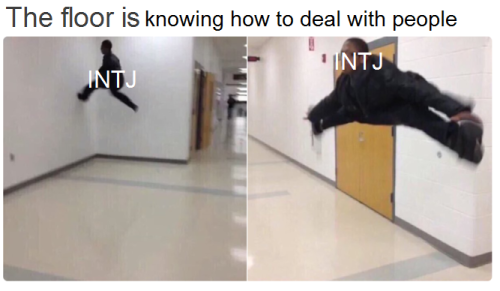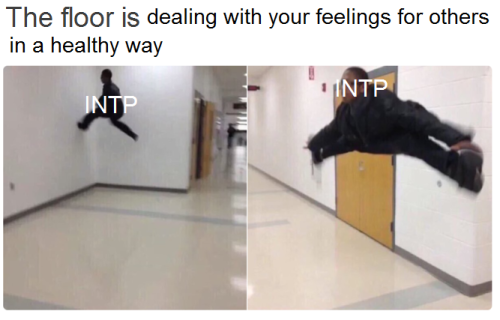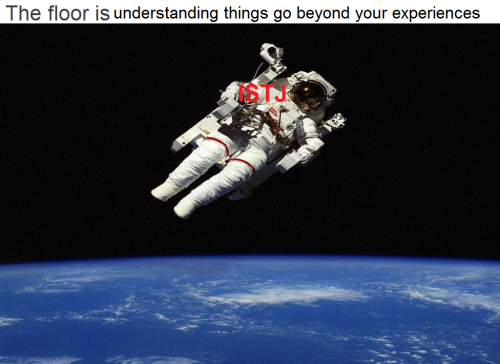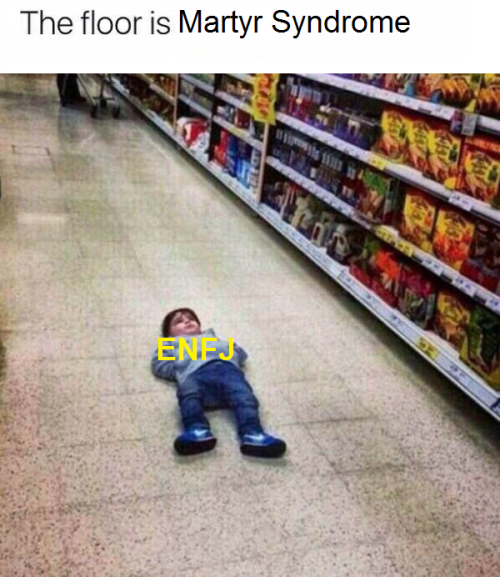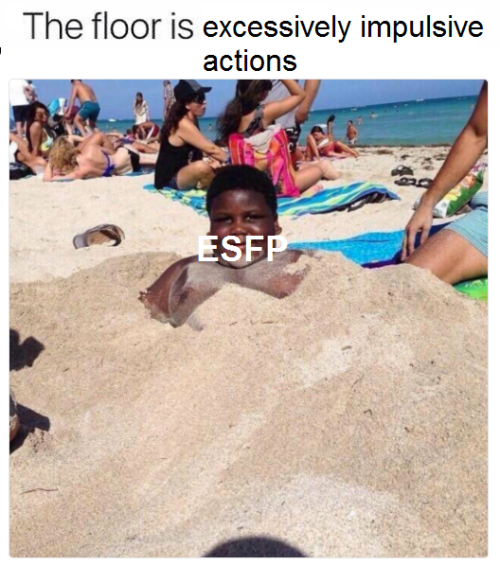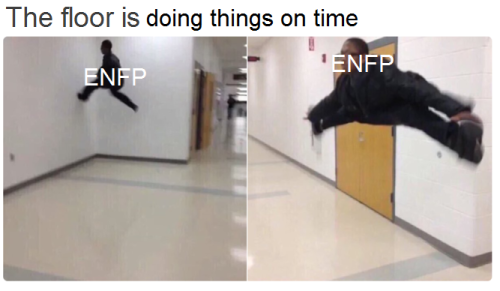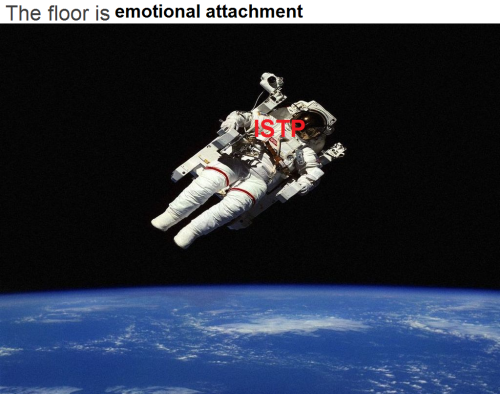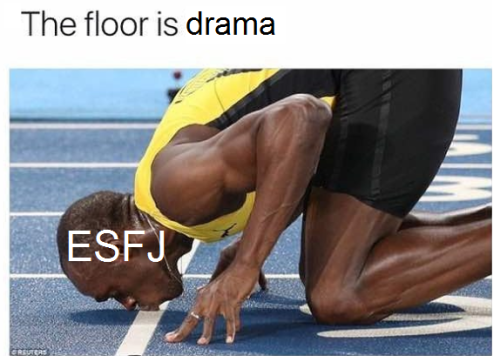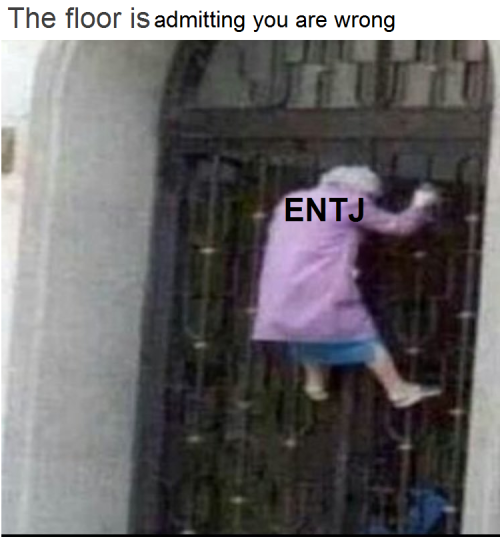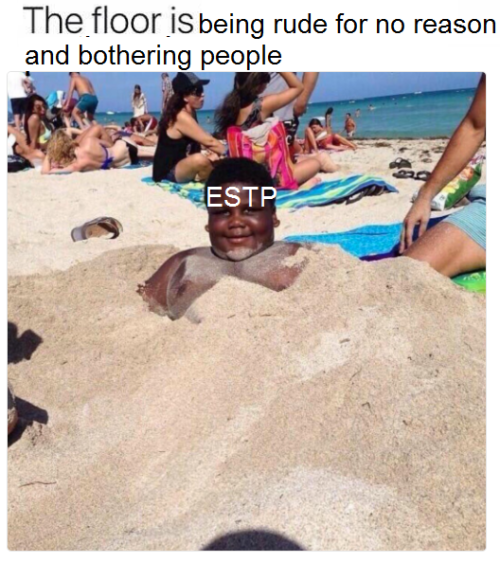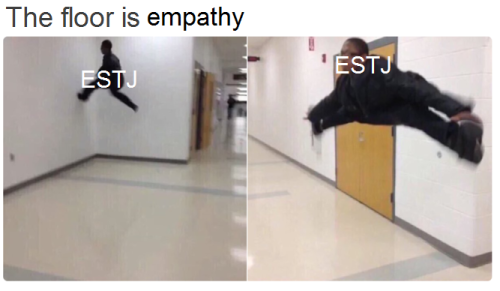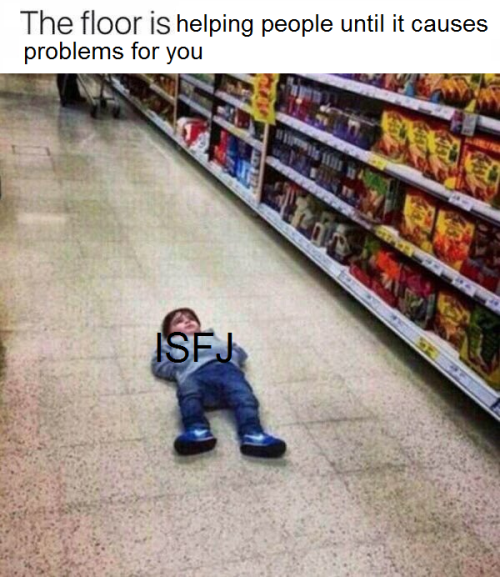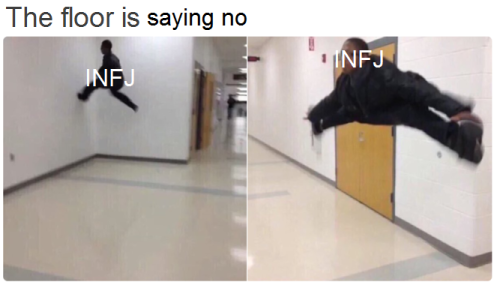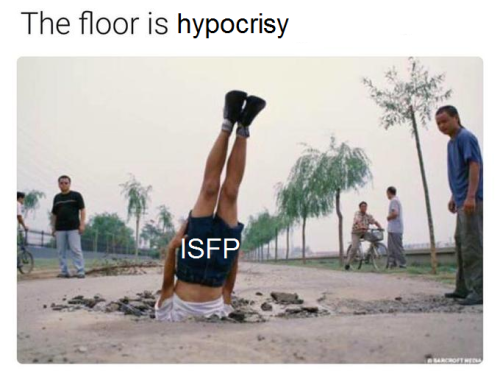[An overview will be written at some point in the future.]
Posts:
The Green Lion
Two birds, inseparable friends, cling to the same tree. One of them eats the sweet fruit, the other looks on without eating.
Pages
▼
Thursday, December 21, 2017
Tuesday, December 12, 2017
Anorexia Mirabilis
 |
| The head of St. Catherine of Siena |
We’ve been taught so effectively to loathe fat people, and especially women who refuse to make themselves small and convenient, that not even the endless drive for profit can convince some of the world’s most enthusiastic capitalists to consider them a priority.- Amanda Mull, "Why Aren’t Fashion ‘Disruptors’ Serving Plus-Size Customers?"
First, blog news: It’s been pretty quiet here at 2Biat, and that is because I’ve been studying for my final exam. And there's also all the holiday madness that happens every year at this time, so there’s a short hiatus happening. However, I had a little brainwave today that I wanted to share to this blog.
One of the things I’m studying about is eating disorders. This is something I have a very personal relationship with. It’s been a long time but for years I hated myself, and hated my body in particular. It took a long time to heal all those wounds. And this is, sadly, a very common problem.
We have a history of starving the body, everything from sages in the desert to the tradition of girls fasting to show how close to God they are. Modern anorexia is basically the same thing as this religious anorexia. Both are hateful towards the body, carnality, desire, and anything perceived of as “weakness,” especially moral weakness. Both are attempts to destroy the feminine within the body.
To love a large, curving, ample female body is to love the flesh. To hate the flesh is to hate the feminine Goddess that lives within the flesh, in our body. This is sharpest in anorexia but the societal obsession with small, spare, hungry bodies – bodies from which all the soft, warm animal comfort has been carved away – is in itself hatred toward the feminine because the body, the animal, is the feminine principle.
The way out of the pit of self-hatred is self-love. When we can finally acknowledge the tremendous work our bodies do, keeping us alive and bearing the burden of our abuse and contempt, then we can finally become friends with ourselves. And more, we can finally literally start to embody the missing sacred feminine back into the world, through our soft, fragile, but amazing and resilient bodies.
… And now you see more what the jewels behind the meat are. Our hero wanted the flesh and instead he fell into the jewels, the eternal or the divine. He has to realize that divine aspect of the flesh. It is not enough for instance, for a Christian who has up until now despised the flesh, to say, “now I’m going to throw my prudish prejudices overboard. I’m going to have juicy sex and enjoy it.” That would be eating the flesh. That’s nothing. If he does that he doesn’t move one inch out of the old kingdom, he’s still caught in it. He only adds the dimension of so-called sin to it. But nothing has happened. He has to realize that the flesh is a form of the divine, a divine revelation, and that sexuality is divine.- The Cat: The Virgin's shadow
That’s what Jung fought with Freud about. He agreed completely with Freud that sex should be liberated and should be lived, not treated with prudish repression, but he wanted to say that sex is a religious experience as in Tantra. And if you live it, therefore, only with the idea, “That’s very healthy for my hormones and makes me physically better,” then you have missed the whole point. Then you have eaten dead meat, rotten meat. The redemption of the feminine means not the redemption of the flesh; it means the redemption of the divinity of the flesh, of the divine, archetypal, godlike aspect of the flesh…
Further reading:
Anorexia Mirabilis and the Fasting Girls (Megan, cvltnation.com)
The Cat: Redeeming the feminine
[Image from Anorexia Mirabilis and the Fasting Girls]
Tuesday, November 28, 2017
Updated! Dog symbolism
Finally... FINALLY... managed to finish the post on dog symbolism. It "only" took me two months. XD At any rate, that's what all the posts about dogs was about. They're all a part of this post. :) Hooray!!!
Symbolism: Dog
Symbolism: Dog
Wednesday, November 22, 2017
Reference: "The Fearsome Hunt of Mallt-y-Nos"
Mallt-y-Nos is generally translated as “Matilda of the Night.” However, it is worth noting that “mallt” is part of the words “mallter” and “malltod.” These mean “curse, blight, rotten, putrefaction or blast.” Therefore, the modern Cymricisation of Matilda into Mallt might mask an older meaning and legend; or it might be a play on words. (As an aside “mallt” is a borrow word meaning “malt” in the whiskey sense, but that could probably be discounted here!”- premiumjoker4195, "The Fearsome Hunt of Mallt-y-Nos"
Another name for this entity is Nos Mallt, which makes more sense as Night Curse, than Night Matilda. The folklorist Wirt Sikes certainly thought so, as he transalted her name as “night-fiend.” Sir John Rhys gave an alternative of “the night evil.”
Mallt-y-Nos: The Horror of the Hunt
She stands in a chariot, led by huge, black horses, each with eyes that burned red. She rides at night, using the legendary Cwn Annwn as her pack of hounds; and she would go hunting. Her prey? Those about to die, who would hear them coming – the barking of the dogs and the eerie cry of the crone behind them.
As the individual died, their spirit might encounter the pack and the chase would be on. If she caught them they would be corralled into Annwn. If they escaped, then there was still a chance of Heaven. Some stories state that Mallt-y-Nos didn’t even wait until death to catch her prey. She was quite capable of setting the Cwn Annwn on a living person, watching her victim tore limb from limb, before capturing their soul as it left their body.
Malit-y-Nos: Who was Matilda
Marie Trevelyan recorded two stories. The first was that the Earthly Matilda had been a Norman noblewoman, who had arrived with Fitzhamon from Gloucester to subdue South Wales. Matilda loved to hunt. In fact, she was so passionate about the chase that she stated, “If I cannot hunt in Heaven, I would rather not go there.” Upon her death, the Welsh God of the Otherworld, Arawn, appeared and took her soul. In life, she had been noted for her beauty; in death, she was transformed into a terrifying hag. Matilda was doomed to go hunting for all eternity.
The second is that a young Welsh woman loved hunting, but her betrothed did not approve of such pursuits for ladies. Upon their marriage, he made her promise never to hunt again and she agreed. However, she missed it. For over a year, she yearned to get back into the chase, but her husband forbade it. Then he went away from home for a while and she seized her opportunity. For a whole day, she happily rode with the hunt meet, swearing everyone else to secrecy. Unfortunately for her, the return journey saw her thrown from her horse.
She had a broken leg, when her husband returned home. It didn’t take him long to put two and two together and deduce that she had reneged on her promise. He stormed out of the house to consult a dyn hysbys (trans: wise woman, wizard or cunning man). The two returned to cast incantations, which raised the young woman from the ground and “threw her to the winds.” As a whirlwind took her up, she was evidently rescued by Arawn and placed in the chariot to lead Annwn’s hunt.
Notable sightings of Mallt-y-Nos
Mallt-y-Nos was particularly well known around St. Donat’s Castle, in Glamorgan, where she was said to be hunting for the soul of the pirate, Colyn Dolphyn. This was the subject of a 1837 poem by Taliensin Williams, The Doom of Colyn Dolphyn:
…Her evil eye
Was never rais’d to greet the sky -
She never sought the mirthful plain;
Nor moved in joyous Hymen’s train;
But mutter’d oft, in voice morose;
And peasants called her – Mallt-y-Nos.
Reference: "We Didn’t Domesticate Dogs. They Domesticated Us."
In the story of how the dog came in from the cold and onto our sofas, we tend to give ourselves a little too much credit. The most common assumption is that some hunter-gatherer with a soft spot for cuteness found some folk puppies and adopted them. Over time, these tamed wolves would have shown their prowess at hunting, so humans kept them around the campfire until they evolved into dogs.- Brian Hare and Vanessa Woods, "We Didn’t Domesticate Dogs. They Domesticated Us."
But when we look back at our relationship with wolves throughout history, this doesn't really make sense. For one thing, the wolf was domesticated at a time when modern humans were not very tolerant of carnivorous competitors. In fact, after modern humans arrived in Europe around 43,000 years ago, they pretty much wiped out every large carnivore that existed, including saber-toothed cats and giant hyenas. The fossil record doesn't reveal whether these large carnivores starved to death because modern humans took most of the meat or whether humans picked them off on purpose. Either way, most of the Ice Age bestiary went extinct.
The hunting hypothesis, that humans used wolves to hunt, doesn't hold up either. Humans were already successful hunters without wolves, more successful than every other large carnivore. Wolves eat a lot of meat, as much as one deer per ten wolves every day—a lot for humans to feed or compete against. And anyone who has seen wolves in a feeding frenzy knows that wolves don't like to share.
Humans have a long history of eradicating wolves, rather than trying to adopt them. Over the last few centuries, almost every culture has hunted wolves to extinction. The first written record of the wolf's persecution was in the sixth century B.C. when Solon of Athens offered a bounty for every wolf killed. The last wolf was killed in England in the 16th century under the order of Henry VII. In Scotland, the forested landscape made wolves more difficult to kill. In response, the Scots burned the forests. North American wolves were not much better off. By 1930, there was not a wolf left in the 48 contiguous states of America. (See "Wolf Wars.")
If this is a snapshot of our behavior toward wolves over the centuries, it presents one of the most perplexing problems: How was this misunderstood creature tolerated by humans long enough to evolve into the domestic dog?
The short version is that we often think of evolution as being the survival of the fittest, where the strong and the dominant survive and the soft and weak perish. But essentially, far from the survival of the leanest and meanest, the success of dogs comes down to survival of the friendliest. (See "People and Dogs: A Genetic Love Story.")
Most likely, it was wolves that approached us, not the other way around, probably while they were scavenging around garbage dumps on the edge of human settlements. The wolves that were bold but aggressive would have been killed by humans, and so only the ones that were bold and friendly would have been tolerated.
Friendliness caused strange things to happen in the wolves. They started to look different. Domestication gave them splotchy coats, floppy ears, wagging tails. In only several generations, these friendly wolves would have become very distinctive from their more aggressive relatives. But the changes did not just affect their looks. Changes also happened to their psychology. These protodogs evolved the ability to read human gestures.
As dog owners, we take for granted that we can point to a ball or toy and our dog will bound off to get it. But the ability of dogs to read human gestures is remarkable. Even our closest relatives—chimpanzees and bonobos—can't read our gestures as readily as dogs can. Dogs are remarkably similar to human infants in the way they pay attention to us. This ability accounts for the extraordinary communication we have with our dogs. Some dogs are so attuned to their owners that they can read a gesture as subtle as a change in eye direction.
With this new ability, these protodogs were worth knowing. People who had dogs during a hunt would likely have had an advantage over those who didn't. Even today, tribes in Nicaragua depend on dogs to detect prey. Moose hunters in alpine regions bring home 56 percent more prey when they are accompanied by dogs. In the Congo, hunters believe they would starve without their dogs.
Dogs would also have served as a warning system, barking at hostile strangers from neighboring tribes. They could have defended their humans from predators.
And finally, though this is not a pleasant thought, when times were tough, dogs could have served as an emergency food supply. Thousands of years before refrigeration and with no crops to store, hunter-gatherers had no food reserves until the domestication of dogs. In tough times, dogs that were the least efficient hunters might have been sacrificed to save the group or the best hunting dogs. Once humans realized the usefulness of keeping dogs as an emergency food supply, it was not a huge jump to realize plants could be used in a similar way.
So, far from a benign human adopting a wolf puppy, it is more likely that a population of wolves adopted us. As the advantages of dog ownership became clear, we were as strongly affected by our relationship with them as they have been by their relationship with us. Dogs may even have been the catalyst for our civilization.
Reference: The Green Lion
 |
| The alchemical “green lion” devouring the sun relates to the experience of consciousness being overwhelmed by violent, frustrated desires (often masked by depression) |
As the text which I gave you briefly in the last hour says, there is in this lead even the element of madness. This refers to another fact for if you dig up depressive states in people, usually at the bottom there are either creative contents or a violent, unsacrificed desire. Frequently depressed people dream of voracious lions or other devouring animals such as dragons, but particularly lions, which means they are depressed because they are frustrated in the fulfillment of their wild desires. They want everything: to be top dog, have the most beautiful partner, money, and everything else. They have the childish, wild desires which would like to eat everything up, but at the same time they are intelligent enough to know that life is not like that, that they cannot have what they want, so the desire curls up into sulky depressiveness. Such a depression has the quality of sulkily frustrated desire and explains why, after an unhappy love affair, people drop into an awful depression. Their lion has been frustrated and has returned sulking to its lair.- Marie Louise von Franz, “Alchemy: An Introduction to the Symbolism and the Psychology”
Some people have a frustrated infant within them. Usually they are very correct and polite, and make very few demands on the analyst, but being too polite and correct and considerate is always suspect. One knows they would like to eat up the analyst completely like the lion, making childish demands and scenes, because the analyst has stopped dive minutes before the time, or answered the telephone, or put off the hour, or even had the flu! Such demanding infantile people compensate by being very correct, knowing that if they admit their demands then the devouring lion will come up and the analyst will naturally hit back, something which they have experienced often in life when, after hiding their feelings, they one day took the risk and got banged on the head. So the hurt child retires once more, bitterly frustrated, and then comes the depression, the devouring lion. That is a part of primitive nature, of primitive archaic reactions which have all the conflicts of wanting to eat and not being able to do so, so that the depressive mania takes over.
That is the symbolism of the madness in the lead, but it also contains Osiris, the immortal man, and if only you accept that spot within you, you will come to the creative content where the Self is hidden. The frustrated child could be said to be an aspect covering up an image of the Self, and the devouring lion also an aspect of the Self.
If you take the image of the devouring lion this is quite clear. If I think I ought to be top dog everywhere, have the most beautiful partner, have money, be happy, and so on, that is a paradise fantasy, and what is that? It is a projection of the Self! So actually, the childish thing is the desire to experience everything in the here and now. The fantasy in itself is entirely legitimate, it has the idea of the coniunctio, a perfect state, a state of harmony. It is a religious idea, but naturally if projected onto outside life and wanted there, in the here and now, that is impossible. The *way* in which the person wants to realize the fantasy is childish, but in itself it is valuable and has nothing wrong or unhealthy about it.
So just in that undominated mad spot of the person, or the wild or problematic spot, there is the symbol of the Self. That gives it the drive, which is why people never know what to do for they cannot repress it; or if they are reasonable and just give the thing up and realize how childish it is and that one should be resigned and adapt to life then they feel that they are cured but that they have been robbed of their best possibilities and so are frustrated.
Reference: "The Wild Hunt"
This spectral, nocturnal horde was the “Wild Hunt,” which was recorded in folklore all throughout ancient, medieval, and even early modern Europe, but was especially concentrated in the Germanic lands of northern Europe. In Scandinavia, it was called Oskoreia, “Terrifying Ride,” or Odensjakt, “Odin’s Hunt.” In Middle High German, it was called Wuotanes Her, “Odin’s Army,” and in modern German Wütende Heer, “Furious/Inspired Army,” or Wilde Jagd, “Wild Hunt.”- Daniel McCoy, "The Wild Hunt"
It swept through the forests in midwinter, the coldest, darkest part of the year, when ferocious winds and storms howled over the land. Anyone who found him- or herself out of doors at night during this time might spot this ghostly procession – or be spotted by it, which might involve being carried away and dropped miles from where the unfortunate person had been taken up, or worse. Others, practitioners of various forms of magic, joined in it voluntarily, as an intangible part of them (a “soul,” if you like) flew with the cavalcade while their bodies lay in their beds as if sleeping normally. Sometimes, the members of the Hunt entered towns and houses, causing havoc and stealing food and drink.
The Leader of the Wild Hunt
When accounts of the Wild Hunt mention a leader, the figure who filled this role varied greatly. In Germany, the leader could have been “Perchta, Berhta, Berta, Holt, Holle, Hulda, Foste, Selga, Selda, Heme, Herla, Berchtold [or] Berhtolt.”
However, as the Wild Hunt’s various names across the Germanic lands attest, one figure was especially closely associated with it: Odin, the god of the dead, inspiration, ecstatic trance, battle frenzy, knowledge, the ruling class, and creative and intellectual pursuits in general. Two of Odin’s hundreds of names further demonstrate his association with midwinter, the time of the year in which the holiday Yule (Old Norse Jól) falls: Jólnir and Jauloherra, both of which mean something like “Master of Yule.” The myths describe him frequently riding throughout the Nine Worlds on his eight-legged steed, Sleipnir, on quests of a shamanic nature, another theme that connects him to the Wild Hunt. As H.R. Ellis Davidson put it, speaking of the manifestations of the Wild Hunt that continued well into the Christian era, “it was natural that the ancient god of the dead who rode through the air should keep a place in this way in the memory of the people, and it reminds us of the terror which his name must once have inspired.”
Conclusion
In the body of lore surrounding the Wild Hunt, we find a number of themes that connect it powerfully with the dead and the underworld. For one thing, there’s the ghostly character of the hunters or warriors themselves. Dogs and horses, animals that were closely associated with death (amongst a great many other things), were almost invariably present. In some accounts of the Hunt, the riders can hardly, if at all, be distinguished from land spirits, who were themselves often conflated with the dead, as if the two were thought of as being in some sense one and the same. Finally, for the ancient Germanic peoples, the worlds of the living and the dead were especially permeable during midwinter, which goes a long way toward explaining why this troop of apparitions haunted the land during that particular part of the year. In the words of Claude Lecouteux, “[T]he Wild Hunt fell into the vast complex of ancestor worship, the cult of the dead, who are the go-betweens between men and the gods.”
It was as if the very elements of midwinter – the menacing cold, the almost unrelenting darkness, the eerie, desolate silence broken only by the baying winds and galloping storms – manifested the restless dead, and the ancient northern Europeans, whose ways of life and worldviews predisposed them to sense the spiritual qualities in the world around them, recorded the sometimes terrifying fruits of such an engagement with the more-than-human world in their accounts of the Wild Hunt.
Reference: The Cadejo
The cadejo is a supernatural character from Central American and southern Mexican folklore. There is a good white cadejo and an evil black cadejo. Both are spirits that appear at night to travelers: the white to protect them from harm during their journey, the black (sometimes an incarnation of the devil) to kill them. The colors of the cadejo are sometimes exchanged according to local tradition. In some places, the black cadejo is seen as the good one and the white cadejo the evil one. They usually appear in the form of a large (up to the size of a cow), shaggy dog with burning red eyes and a goat's hooves, although in some areas they have more bull-like characteristics. According to the stories, many have tried to kill the black cadejo but have failed and perished. It is also said that if a cadejo is killed, it will smell terrible for several days, and then its body will disappear. Some Salvadoran folklore also tells of a cadejo that guards drunks against anyone who tries to rob or hurt them. When the cadejo is near, it is said to bring about a strong goat-like smell. Most people say never to turn your back to the creature because otherwise you will go crazy. Speaking to the cadejo will also induce insanity.- "Cadejo" (Wikipedia)
In popular etymology, the name cadejo is thought to have derived from the Spanish word "cadena", meaning "chain"; the cadejo is at times represented as dragging a chain behind him…
In El Salvador, the dog-like creature is known as El Cadejo, is said to look like a dog but is not a dog, has deer-like hooves and also moves like a deer, rather than a dog. The white Cadejos are known to be benevolent and eat bell-like flowers that only grows on volcanoes. The white Cadejo protects people including drunks, vagabonds, and people with grudges from all evil footsteps and even La Siguanaba, and bad choices which are sometimes caused by the evil black Cadejo. The black Cadejo is malevolent and lures people to make bad choices. The black Cadejo has glowing red eyes and eats new born puppies and sometimes the black Cadejo is said to be the devil himself. The black Cadejo is said to be able to stand on two feet like a man and swiftly throw punches on its victims, letting them know that they are no ordinary dog. The novel "Los perros magicos de los volcanes" (Magic Dogs of the Volcanoes) by Manilo Argueta, describes the Cadejos as mythical dog-like creatures that figure prominently in the folklore of El Salvador. They mysteriously appear at night and lovingly protect the villagers who live on the slopes of the volcanoes from danger.
------------------------------
The cadejo ranges in size according to different tales in various regions. It lurks in graveyards and dark alleys, waiting to attack a passing victim. It has a distinctive smell of concentrated urine and burning sulphur. It rattles with a jerking motion, contracting its pharynx. Its gaze freezes anyone who makes eye contact. It glitters in the pitch dark with skin and short hair, similar to that of a pig.
There are three types of black cadejos:
The first is the devil himself in the form of a large, wounded dog with hoofed feet that are bound with red-hot chains. It is said that not even the white cadejo is able to completely stop him. Unlike the regular black cadejo it is not likely to pursue and attack a passing person, as it is a scout - the eyes of evil…
The second type of cadejo is the regular cadejo, the mysterious evil dog. It kills and savagely tears through its victim. First it demoralizes him with a series of sounds and other signs that it is nearby. Then, after the victim is scared, it leaps forward, and will kill him if the white cadejo is not near.
The final, and least powerful type of black cadejo is the offspring of a normal dog and the "regular" cadejo. It is a mortal hybrid and can (with difficulty) be killed by a strong man (bearing in mind that most men in those regions only carry a machete for protection). Once dead, it will completely rot in a matter of seconds, leaving behind a stain of evil, on which grass and moss will never grow again. This cadejo will never bite its victim. Instead, he kicks and pecks them with his snout. After this happens, people say "Lo jugó el cadejo" which means "he/she was handled by the cadejo". The victim goes mad. This term is sometimes applied to people that are born with a mental illness.
A fairly popular version of the legend in El Salvador talks about two brothers who walk into the house of a black magician. During a storm, he asks the boys to help him with some logs for a fire. Both boys slack on the job but eat the man's food. Once he finds out the little bit of food he had is missing and that there is not enough wood for his fire, he puts a curse on the road that leads to the boys' village. Voices bother the boys and when they turn their backs on the voices they get turned into creatures: a white cadejo and a black one. After going back to their village in their cursed form they get kicked out and have no choice but to wander.
Reference: Popol Vuh
Hurricane makes a great rain.- The Popol Vuh (Mayan creation story)
It rains all day and rains all night.
There is a terrible flood
and the earth is blackened.
The creatures of the forest
come into the homes of the doll-people.
"You have chased us from our homes
so now we will take yours,"
they growl.
And their dogs and turkeys cry out,
"You have abused us
so now we shall eat you!"
Even their pots and grinding stones speak,
"We will burn you and pound on you
just as you have done to us!"
The wooden people scatter into the forest.
Their faces are crushed,
and they are turned into monkeys.
And this is why monkeys look like humans.
They are what is left of what came before.
Reference: Saluki; guardian of paradise
Sometimes referred to as Guardian Dogs, they are more commonly called Watchdogs. In Christian mythology one of the oldest of oral stories is that of "The Seven Sleepers." The story dates back to A.D. 750 and tells of seven youths near the city of Ephesus, which is near the coast of Asia Minor. This story is related to the Arabic epigram that says, "A greedy person is one who would not throw a bone to the dog of the seven sleepers."- Gerald Hausman, "Dogs, Ancient and Modern: A Mythological History"
The watchdog of the seven was thought to be a Saluki. It guarded seven teenagers who were fleeing for their lives during the realm of Emperor Decius sometime around A.D. 250. The Koran tells of the youths' long uninterrupted sleep -- 309 years -- during which time they were constantly watched over by the great Saluki guard dog whose four legs stretched across the mouth of the cave where the boys slept. It is said that the dog spoke to the boys in a prophetic voice saying that he loved those who also loved God or Allah, and that he would watch over them.
This famous story earned the Saluki the right to enter paradise. One interpretation states that the story of the seven sleepers harkens back to ancient Egypt and the dog so named is an emissary between the worlds of life and death, a reference to Anubis.
Reference: Dogs among the Aztecs, Tarascans, and Mayans
Similar inscriptions in the surviving Mayan Codices depict the dog as the bringer of fire to the people and, in the Quiche Maya holy book, the Popol Vuh, dogs are instrumental in the destruction of the ungrateful and unknowing race of humans which the gods first produced and then repented of.Joshua J. Mark, "Dogs in the Ancient World"
The Aztecs and Tarascans shared this view of the dog, including the dog as a guide to the afterlife for the deceased. The Aztecs also had a story in their mythology regarding the destruction of an early race of human beings in which dogs are featured. In this tale, the gods drown the world in a great flood but a man and woman manage to survive by clinging to a log. Once the waters recede, they climb onto dry land and build a fire to dry themselves. The smoke from this fire annoys the great god Tezcatlipoca who tears off their heads and then sews the heads to the rear-ends of the man and woman and, in doing so, creates dogs. According to this myth, dogs pre-date the present race of human beings and so should be treated with respect the way one would treat an elder. The Aztecs also buried dogs with their dead and their god of death, Xolotl, was imagined as a huge dog.
The Tarascans, like the Aztecs and Maya, kept dogs as pets, for hunting, and for food and also linked them with the gods and the afterlife. The souls of those who died without proper burial, such as those who drowned or were lost in battle or died alone on a hunt, were found by spirit dogs who would ensure their safe passage to the afterlife. In all three of these cultures (as, indeed, in the others mentioned above) the belief in ghosts was very real. A ghost could not only make trouble in one's daily life but could actually bring physical harm and even death. The Tarascan tale about the spirit dogs allayed the fear that, if one had not been able to properly bury a loved one, the deceased's ghost would return to trouble the living. The people would not have to fear because the dog would take care of the problem.
Reference: Gelert, protection (dog)
Another great historical/mythical dog guardian is Gelert. Again, with this story, there is a proverb: "To repent as deeply as the man who killed his dog." The Welsh phrase comes from a 13th century folktale which tells of Prince Llewelyn's favorite wolfhound, Gelert. One day the prince was hunting and he noticed that Gelert was not at his side. Returning home, the prince was greeted at the door by his wolfhound who had a blood-red mouth. Inside, the prince saw his son's cradle overturned, and the house in total disarray.- Gerald Hausman, "Dogs, Ancient and Modern: A Mythological History"
Thinking his dog had killed his son, Llewelyn drew his sword and slew Gelert. Then he heard an infant cry from under the cradle. At the same time, he caught sight of a dead wolf in the corner of the hall.
Grief-stricken, Llewelyn built a stately tomb for his brave dog. And so it was that the village Beddgelert, which means Gelert's Grave, received both a name and a saying; one that has survived through the ages.
Reference: Rukaba, guardian of fire
Our dog heroes include the one who first brought fire to humankind. This dog's mythical name was Rukuba, guardian of fire. The story goes that on the first morning of the world, no one knew what gods ruled the earth. They only knew that they were part of everything, and everything was part of them.- Gerald Hausman, "Dogs, Ancient and Modern: A Mythological History"
So in this world of wonders, a man named Nkhango went out exploring and the first thing he saw was something that sparkled. In front of it was a four-footed person with long ears. "What strangeness is this?" Nkhango asked.
"I am Rukuba, guardian of fire, but I am also called Dog."
Nkhango saw that the sparkly thing was hungry and that it clamored for food. Rukuba got up from where he sat and reaching into a pile of dry sticks, fed the thing. It ate quickly and grew brighter.
Nkhango asked Rukuba, "What is the thing you are feeding?"
"Fire," Rukuba answered.
And so began, African storytellers say, the earliest friendship between man and dog. However, in the passage of time, the two became inseparable.
Reference: Argos; loyalty (dog)
In Homer's Odyssey, Argos is Odysseus' faithful dog. After ten years fighting in Troy, followed by ten more years struggling to get home to Ithaca, Odysseus finally arrives at his homeland. In his absence, reckless suitors have taken over his house in hopes of marrying his wife Penelope. In order to secretly re-enter his house to ultimately spring a surprise attack on the suitors, Odysseus disguises himself as a beggar, and only his son Telemachos is told of his true identity. As Odysseus approaches his home, he finds Argos lying neglected on a pile of cow manure, infested with fleas, old and very tired. This is a sharp contrast to the dog Odysseus left behind; Argos used to be known for his speed and strength and his superior tracking skills. Unlike everyone else, including Eumaios, a lifelong friend, Argos recognizes Odysseus at once and he has just enough strength to drop his ears and wag his tail but cannot get up to greet his master. Unable to greet his beloved dog, as this would betray who he really was, Odysseus passes by (but not without shedding a tear) and enters his hall, and Argos dies. The simplicity of the relationship between Argos and Odysseus allows their reunion to be immediate and sincere.- "Argos (dog)" (Wikipedia)
Reference: Dogs in Zoroastrianism
In Zoroastrianism, the dog is regarded as an especially beneficent, clean and righteous creature, which must be fed and taken care of. The dog is praised for the useful work it performs in the household, but it is also seen as having special spiritual virtues. A dog's gaze is considered to be purifying and to drive off daevas (demons). It is also believed to have a special connection with the afterlife: the Chinwad Bridge to Heaven is said to be guarded by dogs in Zoroastrian scripture, and dogs are traditionally fed in commemoration of the dead. Ihtiram-i sag, "respect for the dog", is a common injunction among Iranian Zoroastrian villagers.- "Dogs in religion" (Wikipedia)
Detailed prescriptions for the appropriate treatment of dogs are found in the Vendidad (a subdivision of the Zoroastrian holy scripture Avesta), especially in chapters 13, 14 and 15, where harsh punishments are imposed for harm inflicted upon a dog and the faithful are required to assist dogs, both domestic and stray, in various ways; often, help or harm to a dog is equated with help and harm to a human. The killing of a dog ("a shepherd's dog, or a house-dog, or a Vohunazga [i.e. stray] dog, or a trained dog") is considered to lead to damnation in the afterlife. A homeowner is required to take care of a pregnant dog that lies near his home at least until the puppies are born (and in some cases until the puppies are old enough to take care of themselves, namely six months). If the homeowner does not help the dog and the puppies come to harm as a result, "he shall pay for it the penalty for wilful murder", because "Atar (Fire), the son of Ahura Mazda, watches as well (over a pregnant dog) as he does over a woman". It is also a major sin if a man harms a dog by giving it bones that are too hard and become stuck in its throat, or food that is too hot, so that it burns its throat. Giving bad food to a dog is as bad as serving bad food to a human.The believers are required to take care of a dog with a damaged sense of smell, to try to heal it "in the same manner as they would do for one of the faithful" and, if they fail, to tie it lest it should fall into a hole or a body of water and be harmed.
Both according to the Vendidad and in traditional Zoroastrian practice, dogs are allotted some funerary ceremonies analogous to those of humans. In the Vendidad, it is stated that the spirits of a thousand deceased dogs are reincarnated in a single otter ("water dog"), hence the killing of an otter is a terrible crime that brings drought and famine upon the land and must be atoned either by the death of the killer[23] or by the killer performing a very long list of deeds considered pious, including the healing of dogs, raising of puppies, paying of fines to priests, as well as killing of animals considered noxious and unholy (cats, rats, mice and various species of reptiles, amphibians, and insects).
Sagdid is a funeral ceremony in which a dog is brought into the room where the body is lying so that it can look on it. “Sagdid” means “dog sight” in the Middle Persian language of Zoroastrian theological works. There are various spiritual benefits thought to be obtained by the ceremony. It is believed that the original purpose was to make certain that the person was really dead, since the dog’s more acute senses would be able to detect signs of life that a human might miss. A “four-eyed” dog, that is one with two spots on its forehead, is preferred for sagdid.
The traditional rites involving dogs have been under attack by reformist Zoroastrians since the mid-19th century, and they had abandoned them completely by the late 20th century. Even traditionalist Zoroastrians tend to restrict such rites to a significant extent nowadays (late 20th - early 21st century).
Tuesday, November 21, 2017
Reference: “Dogs make us human”
But a study by Robert K. Wayne and his colleagues at UCLA of DNA variability in dogs found that dogs had to have diverged from wolves as a separate population 135,000 years ago. The reason the fossil record doesn’t show any dogs with humans before 14,000 years ago is probably that before then people were partnered with wolves, or with wolves that were evolving into dogs. Sure enough, fossil records do show lots of wolf bones close to human bones before 100,000 years ago.Grandin, 304-306 ("Dogs Make us Human," from Geek Buffet)
If Dr. Wayne is right, wolves and people were together at the point when homo sapiens had just barely evolved from homo erectus. When wolves and humans first joined together people only had a few rough tools to their name, and they lived in very small nomadic bands that probably weren’t any more socially complicated than a band of chimpanzees…
This means that when wolves and people first started keeping company they were on a lot more equal footing than dogs and people are today. Basically, two different species with complementary skills teamed up together, something that had never happened before and has really never happened since.
Going over all the evidence, a group of Australian anthropologists believes that during all those years when early humans were associating with wolves they learned to act and think like wolves. Wolves hunted in groups; humans didn’t. Wolves had loyal same-sex and nonkin friendships; humans probably didn’t, judging by the lack of same-sex and nonkin friendships in every other primate species today. (The main relationship for chimpanzees is parent-child.) Wolves were highly territorial; humans probably weren’t – again, judging by how nonterritorial all other primates are today.
By the time these early people became truly modern, they had learned to do all these wolfie things. When you think about how different we are from other primates, you see how doglike we are. A lot of the things we do that the other primates don’t are dog things. The Australian group thinks it was the dogs who showed us how.
They take their line of reasoning even further. Wolves, and then dogs, gave early humans a huge survival advantage, they say, by serving as lookouts and guards, and by making it possible for humans to hunt big game in groups instead of hunting small prey as individuals. Given everything wolves did for early man, dogs were probably the big reason why early man survived and Neanderthals didn’t. Neanderthals didn’t have dogs.
But dogs didn’t just help people stay alive long enough to reproduce. Dogs also made it possible for humans to pull ahead of all their primate cousins. Paul Tacon, principal research scientist at the Australian Museum, says that the development of human friendship “was a tremendous survival advantage because that speeds up the exchange of ideas between groups of people.” All cultural evolution is based on cooperation, and humans learned from dogs how to cooperate with people they aren’t related to.
Maybe the most amazing new finding is that wolves didn’t just teach us a lot of useful new behaviors. Wolves probably also changed the structure of our brains. Fossil records show that whenever a species becomes domesticated its brain gets smaller. The horse’s brain shrank by 16 percent; the pig’s brain shrank as much as 34 percent; and the dogs’s brain shrank 10 to 30 percent. This probably happened because once humans started to take care of these animals, they no longer needed various brain functions in order to survive. I don’t know what functions they lost, but I do know all domestic animals have reduced fear and anxiety compared to wild animals.
Now archaeologists have discovered that 10,000 years ago, just at the point when humans began to give their dogs formal burials, the human brain began to shrink, too. It shrank by 10 percent, just like the dog’s brain. And what’s interesting is what part of the human brain shrank. In all of the domestic animals the forebrain, which holds the frontal lobes, and corpus callosum, which is the connecting tissue between the two sides of the brain, shrank. But in humans it was the midbrain, which handles emotions and sensory data, and the olfactory bulbs, which handle smell, that got smaller while the corpus callosum and the forebrain stayed pretty much the same. Dog brains and human brains specialized: humans took over the planning and organizing tasks, and dogs took over the sensory tasks. Dogs and people coevolved and became even better partners, allies, and friends.
Reference: The Pact of Fire
Our dog thinks himself the lord of his domain (our house) and some dog gods in myth felt the same way about all creation. The universe was their divinely created off leash area. In ancient China, Taoists say the creator of the world is Pan Ku, a cosmic being formed of the cosmic Yin and Yang within a shining egg. A legend says Pan Ku, the ancestor of all mankind, was a dog. The myth, in brief, is that Pan Ku took on the form of the God of Heaven to avenge himself against an enemy god. Through cleverness, the dog Pan Ku vanquished this bad god and received his reward, the hand of the daughter of the King of Heaven. Pan Ku then transformed into a mostly human-looking being. Pan Ku and his divine bride then descended into earth and had many children, the beginning of the human race. Thus we are all half divine and half dog. This might explain why our dog sees us as fellow dogs.- Sophia and Danny Sargent, “The Book of Dog Magic: Spells, Charms & Tales”
Dogs are not just our creators in these myths; they also gave us the key to civilization. We have to agree. Our dog makes us more civilized for sure.
The Lakota Sioux have a legend that shows the close relationship between tribal people and dogs. The First Dog Spirit came to the First Man and Woman giving them the divine gift of puppies to help them survive. In return, said First Dog, mankind must provide food and shelter to their dog companions. This is called the pact of fire.
We love this story. It ends with the clear command to never mistreat such divine helpers. We think the Humane Society should spread this myth around.
In many forms, the Dog Spirit also helped humanity survive by stealing fire and giving it to human beings. Apache and other Native American myths claim that Coyote stole fire from the creator, gave it to the human tribes, and suffered as a result of this kindness. Maybe this is why all dogs love to sit around a fire with us. Possibly their fireside howling is their way of letting us know we are only borrowing their fire.
Reference: "The Stubborn Girl"
Long ago, when the Lenapé lived in the east, we were many then. There it is said was a girl who was very, very stubborn, and everyone in her village knew this.- The Stubborn Girl (Native American Embassy)
One evening in autumn, as all the villagers were warming themselves by their fires, a dog suddenly appeared. He was wet and shaking from the cold. The stubborn girl saw him first and she went over to the dog and pushed him over. She said to him, "Tell a story! Tell a story! Probably you know many things."
The girl's mother said, "Leave that dog alone!" But the girl was so stubborn that she pretended not to hear her mother, and she went up to the dog and pushed him over. Again, she said to him, "Tell a story!"
Finally the dog sat down. He said, "Yes, I will tell you a story. In three days time you will be lying under red dirt."
At this the girl got very scared, and her mother went and told everyone in the village, and their Chief.
The dog spoke the truth, because three days later the girl disappeared. She was nowhere to be found.
A person should not question or abuse dogs. Before a person comes to where Kishelamàkâng, the Creator, lives, when they leave this Earth, they will first have to cross a huge bridge. All the departed dogs guard this bridge. The bridge is at a fork in the road on the Milky Way in the sky. All of the Lenapé who live well walk the road beyond the bridge guarded by dogs. Those who live badly walk the other road, never stopping. That's why it is trodden down. No one who has ever done harm to a dog will be allowed to cross over to the other side.
Reference: "How Dogs Came To The Indians"
An evil Windigo spirit came to the lodge of the giant and told the two men- "How Dogs Came To The Indians" (Samoyed.org)
that the giant had other men hidden away in the forest because he like to
eat them. The Windigo pretended to be a friend, but he was the one who
wanted the men because he was an eater of people. The Windigo became
very angry when the giant would not give him the two men, and finally the
giant became angry too. He took a big stick and turned over a big bowl with
it.
A strange animal which the Indians had never seen before lay on the floor,
looking up at them. It looked like a wolf to them, but the giant called the
animal 'Dog.' The giant told him to kill the evil Windigo spirit. The beast
sprang to its feet, shook himself, and started to grow, and grow, and grow.
The more he shook himself, the more he grew and the fiercer he became. He
sprang at the Windigo and killed him; then the dog grew smaller and
smaller and crept under the bowl.
Reference: "Dogs as Divine Messengers: Animal Angels, Spirit Guides and Totems"
Dogs offer people "an ordinary, extraordinary grace," writes Houston in Mystical Dogs. "Look in their eyes and you find beatitude; listen to the thumping of their tail when you come through the door and you know that you are well met in this curious universe of ours." “Dogs are the great companions of our lives. They teach us, love us, care for us even when we are uncaring, feed our souls, and always, always give us the benefit of the doubt. With natural grace, they give us insight into the nature of the good and often provide us with a mirror of our better nature, as well as a remembrance of once and future possibilities."- Dogs as Divine Messengers: Animal Angels, Spirit Guides and Totems (ThoughtCo.com)
In their book Angel Dogs: Divine Messengers of Love by Allen Anderson and Linda C. Anderson write that "dogs exhibit spiritual qualities in abundance. Dogs can be wise, compassionate, loyal, courageous, self-sacrificing, and altruistic. Most of all, they can give the purest, most unconditional love."
When dogs are serving as "messengers from Spirit," they can communicate many different kinds of important messages from God, they write: "Dogs bring to humans such messages as You are loved. You are not alone. You are protected and guided by a divine higher power. Dogs deliver messages such as When you are lonely, weary, overwhelmed by life’s burdens, I am here. People who are in pain often can’t hear the voice of God whispering comfort and hope. So God sends them a messenger with a furry face, wagging tail, licking tongue, and generous heart.
Reference: "The vilest of all things, which was to be cast away, is signified by a dead dog"
A dog signifies the lowest of all, or those who are of small value in the church, likewise those who are outside of the church, also those who prate much about the things of the church and understand little; and in the opposite sense, those who are altogether outside of the faith of the church and treat with contumely the things of faith. That dogs signify those who are outside of the church, is evident in Matthew:- E. Swedenborg, "Spiritual Meaning of Dog"
Jesus said unto the Greek woman, a Syrophoenician, It is not good to take the children's bread and cast it to the dogs. But she said, Surely Lord; but even the little dogs eat of the crumbs which fall from their masters' table. Then Jesus answering said unto her, O woman, great is thy faith; be it unto thee as thou wilt; and her daughter was healed (Matthew 15:26-28; Mark 7:27, 28);
Where by children are meant those who are within the church, and by dogs those who are outside of it. In like manner by the dogs which licked the sores of Lazarus (Luke 16:21); for by the rich man there, in the internal sense, is meant one who is within the church and consequently abounds spiritual riches, which are the knowledges of truth and good. Dogs denote those who are in the lowest place within the church, who prate much about the things of the church and understand little, and in the opposite sense, those who treat with contumely the things of faith, in these passages:
His watchmen are all blind, they do not know; they are all dumb dogs, they cannot bark; looking on, lying down, loving to sleep (Isa. 56:10).
They are noisy like a dog, they go round about in the city; for they belch with their mouth; swords are in their lips (Ps. 59:6, 7, 14).
That thy foot may stamp in blood, the tongue of thy dogs... (Ps. 68:23).
Give not that which is holy to the dogs, neither cast ye your pearls before the swine, lest haply they trample them with their feet, and turn and rend you (Matt. 7:6).
For this reason the vilest of all things, which was to be cast away, is signified by a dead dog (1 Sam. 24:14; 2 Sam. 9:8; 16:9).
Monday, November 20, 2017
Comparing the Fe/Ti with Fi/Te
NTPs and NFJs both champion reason over instinct. I mean this in a very peculiar way. The NPT and NFJ types all possess an extroverted feeling/ introverted thinking axis. Extroverted feeling sees feeling and sentiment as common and seeks to harmonize with its surrounding, while introverted thinking is deductive and develops logical principles that are meant to be universally valid. Thus NFJs and NTPs both naturally assume one should sacrifice of oneself, whether to harmonize with their surroundings or to hold onto universal logical principles, in order to be happy. In other words, one’s logical reasoning and accommodating others should win over personal interests and feelings or, as they are often thought of by these types, instincts. These four types believe in giving up the base instincts and personal desires in favor of a greater standard.- Michael Pierce, "NFJ vs. NTP: Type Interaction and Comparison: Part I"
This is in diametric opposition to the NFP and NTJ types, which have an introverted feeling/ extroverted thinking axis, meaning they do not want to sacrifice of their personal treasure-hold of values, to string up their feelings like stripped and skinned animals for all to see. Or, as Friedrich Nietzsche said, to presume that because something is essential for my survival, then it must actually exist as a universal truth common to all men. Thus, the introverted feeling/ extroverted thinking axis naturally believes one should harmonize with their own values and not submit to a greater standard. Or, if one does follow a greater standard, it should only be because it happens to harmonize with their standard already and not the other way around.
The upshot of this is that the NFJ and NTP types have a better understanding and comfort level with each other, and the same goes for the NFP and NTJ types together. This is not to say that NFJ/ NTP relations are destined for greatness or that NFP/ NFJ relations are doomed for failure. There are many, many other factors involved in a pair of types becoming good friends. But, on the level of typology, NFJ and NTP types have an advantage because they’re coming from the same place, and the same goes for NFP with NTJ types. The extroverted feeling and introverted thinking axis sees the opposite axis selfish, petty, egocentric, and hierarchical; while the extroverted thinking/ introverted feeling axis sees the opposite axis as conformist, unthinking, fruitless, and weak. Not in the sense that they think this of each other as people, but this is how they view the raw concept on its own; when they glimpse these tendencies in the other person it can be a source of confusion.
This idea can be broken into the third and fourth points of connection for NTPs and NFJs: that they value, to some degree or other, displays of warmth; and that they seek for universal truth. Even the INTP, which represses extroverted feeling, has a predisposition to see sentiment and feeling as a common affair, something on the surface; expressive and not personal or burning deep within. NTP and NFJ types expect and appreciate expressive love, love that makes it your business that you are loved. Extroverted feeling has no problem, for a lack of a better metaphor, for prancing naked before the world and letting people know it’s there. Introverted feeling is the opposite, wanting to keep love close and personal and not commercialized or prostituted before the world (as they might think of it). In this way the NTP and NFJ types both speak a similar language of love and sentiment in that they feel it should be expressed, clearly and openly, even conventionally, or at least tastefully. Not only that, but these types are particularly appreciative of sacrifice on their behalf. In other words, of two people becoming in tune with each other at their own expenses, purifying themselves of selfish contaminants and returning to the original source of sentiment from which they were all supposedly derived.
Such modification of behavior in favor of another’s standard is rather detestable to the introverted feeling type for the following reason: if the person is not doing it purely because they themselves like acting that way, then they are not harmonizing with their own values, walking to the beat of their own drummer, but are conforming, and what’s worse they are making the NFP or NTJ their greater standard. The NFP or NTJ doesn’t want that, they want to meet the real you. The problem here, though, is that the NTP and NFJ types don’t have a real them, in the sense that the NFP and NTJ want or expect. An NFP type trying to get an NFJ to become more themselves – to become in tune with themselves – is bound to become somewhat frustrated because NFJ types don’t have a sentimental core but a cold, logical one. But NPTs and NFJs understand this about each other, and do not risk the same frustration and confusion they may have met in other relationships.
This leads into the next point, which is that the NTP and NFJ types seek for universal truth. This is the attitude of their introverted thinking. Even the ENFJ, who tends to drift to the right or left of their logical principles in favor of extroverted feeling’s warmth, is still drifting to the right or left of something. This is the logical principles of introverted thinking, and because of their deductive, mathematical, absolute nature they are meant to be universally valid. If they are contradicted in some situations then the logic is unsound and the law must be altered. Note that with extroverted thinking this is not so, because extroverted thinking is inductive and bases its conclusions on masses of data. It cannot be mathematically contradicted, only statistically improbable under certain circumstances. This lends itself to the subjective, personal nature of introverted feeling which wants to be true to itself and not anyone else. Meanwhile, introverted thinking is very conducive to extroverted feeling as both want to be true to a metaphysical greater standard that applies in all situations: a categorical imperative. In the same way as with extroverted feeling, the NTP and NFJ types are coming from the same place. They are all, to some degree or other, living according to mathematical principles and imperatives rather than subjective passions, and can thus reason as such and feel they understand each other’s motivations much more.
This sharing of the introverted thinking/ extroverted feeling axis can be very relaxing for the NTP and NFJ types, if they are placed in circumstances to be friends. Their communication is that much smoother and, while their opinions may differ, it is like two Americans having differing opinions but being perfectly able to communicate them. But with, say, an NTP and an NTJ it is more like an American and a Mongolian trying to communicate. They come from completely different cultures and speak different languages, and thus they are difference of opinion becomes alienated from each other; difficult to really understand, mysterious, or even repelling. It’s never so dramatic as I’ve made it sound but the principle and the metaphor is true, from my experience.
Introverted vs. extroverted feeling
Each turns into its opposite when unhealthy: the introverted feeler becomes judgmental and absolutist, allowing the other no freedom to live according to their own inner dictates. Here the extroverted feeler, because they naturally try to understand other people, knows that they have a good reason (or a reason that feels good to them at least) for doing what they do. On the other hand, the unhealthy extroverted feeler, because there is nothing worse to them than selfishness, has to hide their selfishness from themselves which turns it even more brutal and selfish, where an introverted thinker can see the dark side of themselves and others and accept it.
Extroverted feeling is fond of saying what they believe “people should” do; people should be selfless, people should be kind, people should be thoughtful… but they often struggle with living up to their own standards. Introverted feeling demands that the world let them live according to their own inner beat… but they often struggle to allow others the same freedom, as they are convinced that they have found the best, most beautiful values. Both extroverted and introverted feeling believes its values are, or should be, self-evident truths. This is why both can be extremely judgmental when unhealthy; this leads both to losing the things they most value. For introverted feeling, it’s individual freedom; for extroverted feeling, they destroy the harmony, love, and good feeling.
Extroverted feeling is fond of saying what they believe “people should” do; people should be selfless, people should be kind, people should be thoughtful… but they often struggle with living up to their own standards. Introverted feeling demands that the world let them live according to their own inner beat… but they often struggle to allow others the same freedom, as they are convinced that they have found the best, most beautiful values. Both extroverted and introverted feeling believes its values are, or should be, self-evident truths. This is why both can be extremely judgmental when unhealthy; this leads both to losing the things they most value. For introverted feeling, it’s individual freedom; for extroverted feeling, they destroy the harmony, love, and good feeling.
Tuesday, November 7, 2017
Friday, November 3, 2017
"What a Shaman Sees in a Mental Hospital"
Studying mainstream psychology as a Jungian is an exercise in frustration; it's maddening to see how messed up and crazy modern day psychology is! It's one of the fields that is the most possessed by Apollonian excess... and one of the most damaging. It's so unbelievably sad how much pain is created, by the very people who really want nothing more than to help people! Such a heart-breaking tragedy.
At any rate, I ran across this article and thought it was enlightening and fascinating. "In the shamanic view, mental illness signals 'the birth of a healer,' explains Malidoma Patrice Somé. Thus, mental disorders are spiritual emergencies, spiritual crises, and need to be regarded as such to aid the healer in being born." Our tendency to institutionalize our healers, rather than help them rebirth through their crises, is undoubtedly a large part of the reason that our society is destroying itself. Here's an excerpt:
At any rate, I ran across this article and thought it was enlightening and fascinating. "In the shamanic view, mental illness signals 'the birth of a healer,' explains Malidoma Patrice Somé. Thus, mental disorders are spiritual emergencies, spiritual crises, and need to be regarded as such to aid the healer in being born." Our tendency to institutionalize our healers, rather than help them rebirth through their crises, is undoubtedly a large part of the reason that our society is destroying itself. Here's an excerpt:
What those in the West view as mental illness, the Dagara people regard as “good news from the other world.” The person going through the crisis has been chosen as a medium for a message to the community that needs to be communicated from the spirit realm. “Mental disorder, behavioral disorder of all kinds, signal the fact that two obviously incompatible energies have merged into the same field,” says Dr. Somé. These disturbances result when the person does not get assistance in dealing with the presence of the energy from the spirit realm.- Stephanie Marohn, "What a Shaman Sees in A Mental Hospital" (Waking Times)
One of the things Dr. Somé encountered when he first came to the United States in 1980 for graduate study was how this country deals with mental illness. When a fellow student was sent to a mental institute due to “nervous depression,” Dr. Somé went to visit him.
“I was so shocked. That was the first time I was brought face to face with what is done here to people exhibiting the same symptoms I’ve seen in my village.” What struck Dr. Somé was that the attention given to such symptoms was based on pathology, on the idea that the condition is something that needs to stop. This was in complete opposition to the way his culture views such a situation. As he looked around the stark ward at the patients, some in straitjackets, some zoned out on medications, others screaming, he observed to himself, “So this is how the healers who are attempting to be born are treated in this culture. What a loss! What a loss that a person who is finally being aligned with a power from the other world is just being wasted.”
Another way to say this, which may make more sense to the Western mind, is that we in the West are not trained in how to deal or even taught to acknowledge the existence of psychic phenomena, the spiritual world. In fact, psychic abilities are denigrated. When energies from the spiritual world emerge in a Western psyche, that individual is completely unequipped to integrate them or even recognize what is happening. The result can be terrifying. Without the proper context for and assistance in dealing with the breakthrough from another level of reality, for all practical purposes, the person is insane. Heavy dosing with anti-psychotic drugs compounds the problem and prevents the integration that could lead to soul development and growth in the individual who has received these energies.
------------------------------
“Unless the relationship between the living and the dead is in balance, chaos ensues,” he says. “The Dagara believe that, if such an imbalance exists, it is the duty of the living to heal their ancestors. If these ancestors are not healed, their sick energy will haunt the souls and psyches of those who are responsible for helping them.” The rituals focus on healing the relationship with our ancestors, both specific issues of an individual ancestor and the larger cultural issues contained in our past. Dr. Somé has seen extraordinary healing occur at these rituals.
Taking a sacred ritual approach to mental illness rather than regarding the person as a pathological case gives the person affected–and indeed the community at large–the opportunity to begin looking at it from that vantage point too, which leads to “a whole plethora of opportunities and ritual initiative that can be very, very beneficial to everyone present,” states. Dr. Somé.
Thursday, November 2, 2017
"Baba Yaga and the Challenge of Darkness. Or, I Love the Smell of Manflesh in the Morning"
A little late for Halloween, but here's something interesting:
Links:
Vasilisa the Beautiful
See also:
Crone
Death
She is more than a witch. She is a great nature goddess, possessing the power of both life and death like nature herself. She is an image of the Divine Feminine, that which is capable of ruthless destruction and loving nurturing. She is the folklore equivalent of other bivalent goddesses such as Kali. In this sense, it isn’t correct to categorize Baba Yaga as evil, any more than it would be to describe nature itself with this word. Nature is amoral, sometimes fantastically destructive and cruel, and other times just as life-giving and nurturing. Jung explores this theme in his famous essay “Answer to Job.” In it, he makes the case that Yahweh is unconscious, and therefore amoral. “This is I, the creator of all the ungovernable, ruthless forces of Nature, which are not subject to any ethical laws. I, too, am an amoral force of Nature, a purely phenomenal personality that cannot see its own back.” Evil can only exist where there is consciousness.- "Baba Yaga and the Challenge of Darkness. Or, I Love the Smell of Manflesh in the Morning", Lisa Marchiano (The Jung Soul")
Baba Yaga’s grotesqueness and power are illustrative of the problem of dealing with these dark, primordial psychic contents. All of us contain this kernel of darkness. We manage to hide it away from ourselves for the most part, remaining naïve to our own capacity for evil and destruction. What happens when we do confront it? Sometimes, it can destroy us, overwhelming us and turning us into the very monster we sought to overcome. This is a story of the ego’s hubris, the imperial belief that it can colonize and rule over the contents of the unconscious. When consciousness does not approach the archetypal energies within the collective unconscious with sufficient humility, it will be vulnerable to being devoured or corrupted by the darkness therein.
Links:
Vasilisa the Beautiful
See also:
Crone
Death
Wednesday, November 1, 2017
"A Journey from Where to Where"
Oliver Sacks - humanist neurologist and one of the greatest popularizers of science, and also one of my personal heroes - died a couple years back (2015). RadioLab just released an episode featuring recordings from his final days; he had recently been diagnosed with terminal cancer and had many interesting dreams:
See also:
Death
Journey
Mountain
Ravine
I’ve been having a lot of strangely archetypal dreams of a journey I have to make. Getting lost, and getting found; full of surprises, maybe going through a door, which I think will be a door to another room but is a door to a mountain landscape – and sometimes frightening ravines and edge-long, very narrow ledges – but then finally coming to some great, spacious, heavenly mountain meadow, and then waking. Dreams about journeys, an approaching end, and..... it’s a journey from where to where.RadioLab Oliver Sacks: A Journey From Where to Where (10/27/17, 4:49)
See also:
Death
Journey
Mountain
Ravine
Friday, October 13, 2017
Glossary: Libido
Psychological energy; from the Latin meaning “desire,” or “love.” Unlike Freud, for Jung libido was not limited to sexual energy but was all mental and emotional energy. Where the libido goes, there goes one’s fascination and attention. This psychic energy manifests as drives, aspirations, compulsions, etc.
As Jung believed that the psyche is a self regulating system, he felt that a person’s libido “knew” where it needed to go for one’s growth. Our job is to figure out where that is. You can’t control or decide this because one’s libido is governed by something larger than the ego, namely, the Self. When there is intense activity in the unconscious the Self pulls libido out of consciousness resulting in the feeling of depression, or a general lack of energy.
Libido can be blocked, in which case it will find another channel, or change direction. Because of psyche’s tendency to balance itself out, it will often do this naturally when the conscious self has gone too far in one direction, often changing into its complete opposite (compensation, enantiodromia).
Jung quotes from: Daryl Sharp's "Jung Lexicon"
See also:
Compensation
Enantiodromia
Hero
As Jung believed that the psyche is a self regulating system, he felt that a person’s libido “knew” where it needed to go for one’s growth. Our job is to figure out where that is. You can’t control or decide this because one’s libido is governed by something larger than the ego, namely, the Self. When there is intense activity in the unconscious the Self pulls libido out of consciousness resulting in the feeling of depression, or a general lack of energy.
Libido can be blocked, in which case it will find another channel, or change direction. Because of psyche’s tendency to balance itself out, it will often do this naturally when the conscious self has gone too far in one direction, often changing into its complete opposite (compensation, enantiodromia).
[Libido] denotes a desire or impulse which is unchecked by any kind of authority, moral or otherwise. Libido is appetite in its natural state. From the genetic point of view it is bodily needs like hunger, thirst, sleep, and sex, and emotional states or affects, which constitute the essence of libido.- Jung "The Concept of Libido," CW 5, par. 194
For Jung, the hero is a symbol of the developing ego's libido. By libido, Jung means not simply desire or psychological energy but psychological purpose as well. For him, the hero myth expresses the ego's desire to replace dependency upon the unconscious with self-direction - a purpose that necessitates an ambivalent struggle with the mother, who symbolizes the unconscious- Beebe, Aspects of the Masculine (p. 9)
Libido can never be apprehended except in a definite form; that is to say, it is identical with fantasy-images. And we can only release it from the grip of the unconscious by bringing up the corresponding fantasy-images.- Jung, "The Technique of Differentiation," CW 7, par. 345
Always in advance of consciousness, calling us into new activity. Libido in turn is a part of the life energy that drives all organisms to grow and develop. Its first expression is in the energy of growth that causes cell division, budding, etc. (so it IS sexual at first). As you climb the phylogenetic ladder, libido used for sexuality loses its sexual character and flows into other forms.- Craig Chalquist, PhD, A Glossary of Jungian Terms
Libido contains two opposite urges or instincts (see ambivalence/ambitendency): to live and to die, to go forwards and backwards (death drive) into instinctuality/womb/uncon. The libido contains both or no movement could happen.
It does not lie in our power to transfer "disposable" energy at will to a rationally chosen object. The same is true in general of the apparently disposable energy which is disengaged when we have destroyed its unserviceable forms through the corrosive of reductive analysis. [It] can at best be applied voluntarily for only a short time. But in most cases it refuses to seize hold, for any length of time, of the possibilities rationally presented to it. Psychic energy is a very fastidious thing which insists on fulfilment of its own conditions. However much energy may be present, we cannot make it serviceable until we have succeeded in finding the right gradient.- Jung, "The Problem of the Attitude-Type," CW 7, par. 76
What is it, at this moment and in this individual, that represents the natural urge of life? That is the question.- Jung, "The Structure of the Unconscious," CW 7, par. 488
Jung quotes from: Daryl Sharp's "Jung Lexicon"
See also:
Compensation
Enantiodromia
Hero


